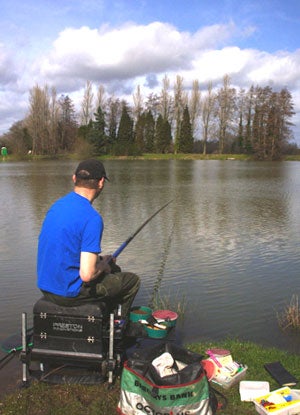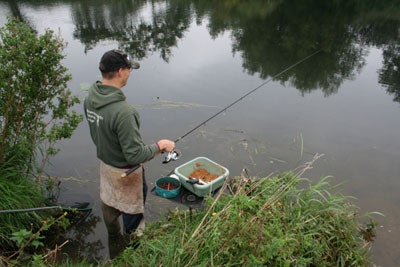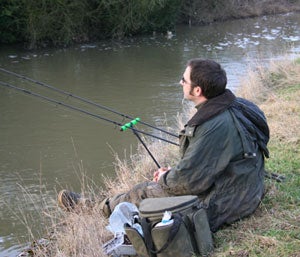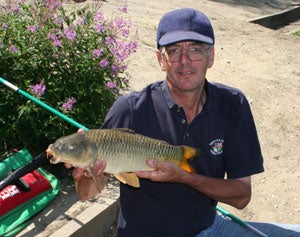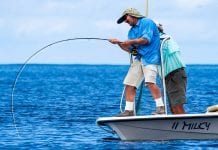| MARK WINTLE | |
|
The main types of coarse fishingIn the first of this short series I looked at the legal necessities of fishing – licences and permits. Now I’m going to tell you about the main types of coarse fishing and once you’ve grasped this you should be better prepared for the expensive part of taking up fishing – buying the tackle you need.Coarse fishing describes fishing for freshwater fish other than trout, seatrout and salmon. It provides a tremendously wide variety of fishing. It could be catching small fish such as dace and gudgeon using a float, trying to catch chub from a weedy river by legering, catching small carp from a day ticket pool on a pole or fishing for big carp from a big flooded gravel pit. It could be trying to catch perch with a worm, and a chub on a dry fly, a pike on a spinner or a huge catfish on a dead fish. And that’s just a few options. It is clear that these many styles of fishing need different types of rods, reels, lines, hooks and baits, and with that many types of set-ups, or rigs, as we commonly call them. This site has a wealth of rigs (that once you have more idea about when and where to use them will prove invaluable) as well as hundreds of technique articles. Look through the Beginners and Technique sections as well as links to this series. There are six basic methods used within coarse fishing. Of course, within these are many variations but once you can do one of these methods then it is easier to progress within that method. What is much more difficult is to try to use the equipment suited for one of the methods for a different one. These methods cover many types of fish and different sorts of waters. The techniques for a narrow barge canal are useless on a big river like the Trent or Severn and the opposite applies. Some techniques can be applied to most waters. Floatfishing is one example of this, being a good technique for canals, rivers and lakes. Float fishing with a rod and reelSimple float fishing means using a rod and reel with a fine line, typically two to four pounds breaking strain and a float. By attaching weights (split shot) to the line below the float the float is trimmed so that only the tip is showing. The float supports the bait at the required depth, lets you see bites, and gives casting weight when shot have been added to the line. On a river using a float helps you search an area of water by letting the float travel with the current; this is known as trotting. It is well suited to catching river species like dace and roach, and lake species like roach, bream, rudd and perch. Typical bait is maggots.
Pole fishingPole fishing is a brilliantly simple variation of floatfishing but without the reel. A pole is the very long rod that has no eyes so the line is attached to the end. They may be as long as sixteen metres or more although more typically are eleven to thirteen metres. Instead of using a reel to cast the pole is broken down by pulling the joints apart to enable rebaiting and landing fish. Some stretchy elastic fitted inside the end of the pole to provide a cushion against the struggles of the hooked fish. The elastic is matched to the line being used. It is a good technique for canals, small stillwaters and commercial fisheries. You can land big fish, including carp over ten pounds, using a pole, and the advantages in skilful bait presentation are outstanding. You can pole fish a river though it is trickier. Using a short, cheap pole of just three or four metres is excellent for beginners like young anglers who might struggle to use a reel.Legering and feeder fishingLegering means that you use a rod and reel with a weight on the line that rests on the bottom of the lake or river. No float is involved. This leger weight also provides the required casting weight. Lines used are stronger than those used for floatfishing but still in the range three to eight pounds.
Carp fishingCarp fishing is the most popular branch of coarse fishing. In general terms it is a more specialised form of legering, although one technique involves fish with floating baits on the surface. Carp are much bigger than other fish; that means stronger lines and specialist rods and reels. The main technique is legering though with special rigs and baits (usually boilies). Larger carp need more time to catch, they are harder to catch than smaller, more prolific species and much of carp fishing is geared to longer sessions at the waterside. Carp anglers often use bivvies (bivouacs, a type of tent), bed chairs, and multi-rod set-ups with electronic bite indicators. They need other camping and cooking equipment, and more space. Carp fishing may involve fishing at long range; a hundred yards not being unusual, and that in itself means heavy weights and the means to cast them.Predator fishingPredator fishing in the UK mostly means fishing for pike, perch, zander and catfish. These fish are largely fish eaters so the three main methods are using artificial lures that resemble their prey or dead or live fish as bait.
Fly fishingThe final, and least used of coarse fishing methods, though widely used for trout, is fly fishing. This utilises a special rod and reel with a weighted line to give casting ability. At the end of the trace is a fly made of feathers and other materials that usually represents a natural insect. This challenging method offers a very different approach to most coarse fishing as it is reliant on learning how to cast and present a fly, and coarse fishing relies more on the use of introduced bait to encourage the fish to feed and presenting a bait.Where to startThose are the basic methods. Some are active methods, geared to short sessions of a few hours and plenty of action. When float or pole fishing you need to concentrate on watching the float, controlling the line and feeding, to attract the fish. Other methods are far more laid back; with carp fishing the tackle is largely fishing for itself whilst the angler relaxes. Legering is somewhere between the two – not as intense as float or pole fishing yet not so laid back as most forms of carp fishing.If you are an absolute beginner you may want to try different styles before settling on one branch of the sport. Or you may find that your own circumstances dictate what sort of fishing you actually do. You may have little time available, or simply are restricted by the sorts of fishing nearby. There is no easy answer to this. For many beginners easy fishing for small fish is a good way to get a grounding in the sport; there’s plenty of action, and you’ll quickly gain some confidence and experience which could spur you on to more challenging types of fishing. If you have somewhere in mind where you want to fish try to find out more about it from other anglers and the local tackle shop. Find out more about what fish are present and the methods that may be suitable for catching them. Waters and fishMatching the methods the waters and the fish.Rivers Canals Drains Stillwaters Other more natural lakes may contain bigger carp, rudd, roach, tench and bream, and possibly perch, pike and even catfish. There is the opportunity to make a variety of methods work according to your quarry. Part 3 will be about matching rods and reels to the methods. |











